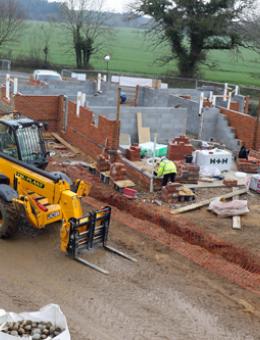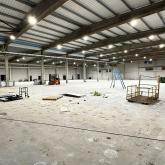
NEW HOMES PUSH MUST NOT ENDANGER MUCH-NEEDED COMMERCIAL DEVELOPMENT
Published 18 December 2024
If – and it is a big if – it can be delivered, the government’s commitment to build 1.5 million new homes during the course of this parliament will be a significant step towards the economic growth that politicians of all parties can at least agree is central to our future prosperity, writes Nick O'Leary.
But there is a danger that focussing too sharply on that one single lever of growth could have a detrimental effect on other, equally vital pillars of economic growth.
At the weekend the Home Builders Federation warned that there is a shortfall of more than 60,000 bricklayers, plumbers, carpenters, plasterers, electricians, groundworkers and engineers which could make meeting those ambitious house-building targets nigh on impossible.
There is a real danger that this ‘rush for residential’ will hoover up all the spare capacity in other areas of the construction sector, leaving those looking to undertake much-needed commercial development even more hard-pressed.
In housing, we are told that planning constraints are the main factor holding back progress; in commercial construction, whilst planning remains a factor, so too is funding. Soaring construction costs have made speculative development less and less viable; an exodus of construction skills to the residential sector will simply drive up costs still further.
Inevitably, building new homes results in local population growth, which in turn brings about demand for more commercial services (the British Property Federation estimates that each new home generates the need for an extra 6.4 square metres of logistics space alone), not to mention the need for employment areas where all of those extra people can go to work.
If you cannot deliver commercial development alongside all that residential development, you end up with an unbalanced economy and society – it is no different to omitting to build schools, doctors’ surgeries and neighbourhood shops alongside all the new homes.
There is no argument that we face an acute housing shortage which can only be solved by building significantly more new homes. But that cannot be the sole focus; there needs to be a balanced approach to growth and development, with quality public services, critical infrastructure and commercial development all happening at the same time.
That means prioritising reskilling many more workers in construction, de-risking private investment in infrastructure, and finding a way to plug the funding gap which has made speculative commercial development so difficult.
Because it is no good having lots of new homes if we don’t have the economic activity and social infrastructure to support the people who will live in them.
Share this story
Arnolds Keys Blog

SURVEY FIGURES CUT THROUGH THE SHOCK HEADLINES
13 December 2024
The picture painted in the media of the private rented sector is often one of transitory tenants, a constant churn for landlords, and a lack of a security of tenure... Read more >

STAND BY FOR A FRANTIC JANUARY
6 December 2024
As we head into Christmas, we property professionals are already getting ready for one of the busiest Januarys in recent years – because a combination of three factors have come... Read more >

REPURPOSED INDUSTRIAL BUILDING SET TO REACH NEW HEIGHTS
25 November 2024
A large former industrial building on a Norwich industrial estate is set to become a climbing centre – part of an increasing trend of such buildings being repurposed for leisure use. Read more >

SHOULDER TO SHOULDER WITH THE FARMING COMMUNITY
23 November 2024
On Tuesday I joined thousands of farmers in London to protest against the Agricultural Property Relief (APR) changes announced in the Budget and to highlight the many challenges currently facing... Read more >
